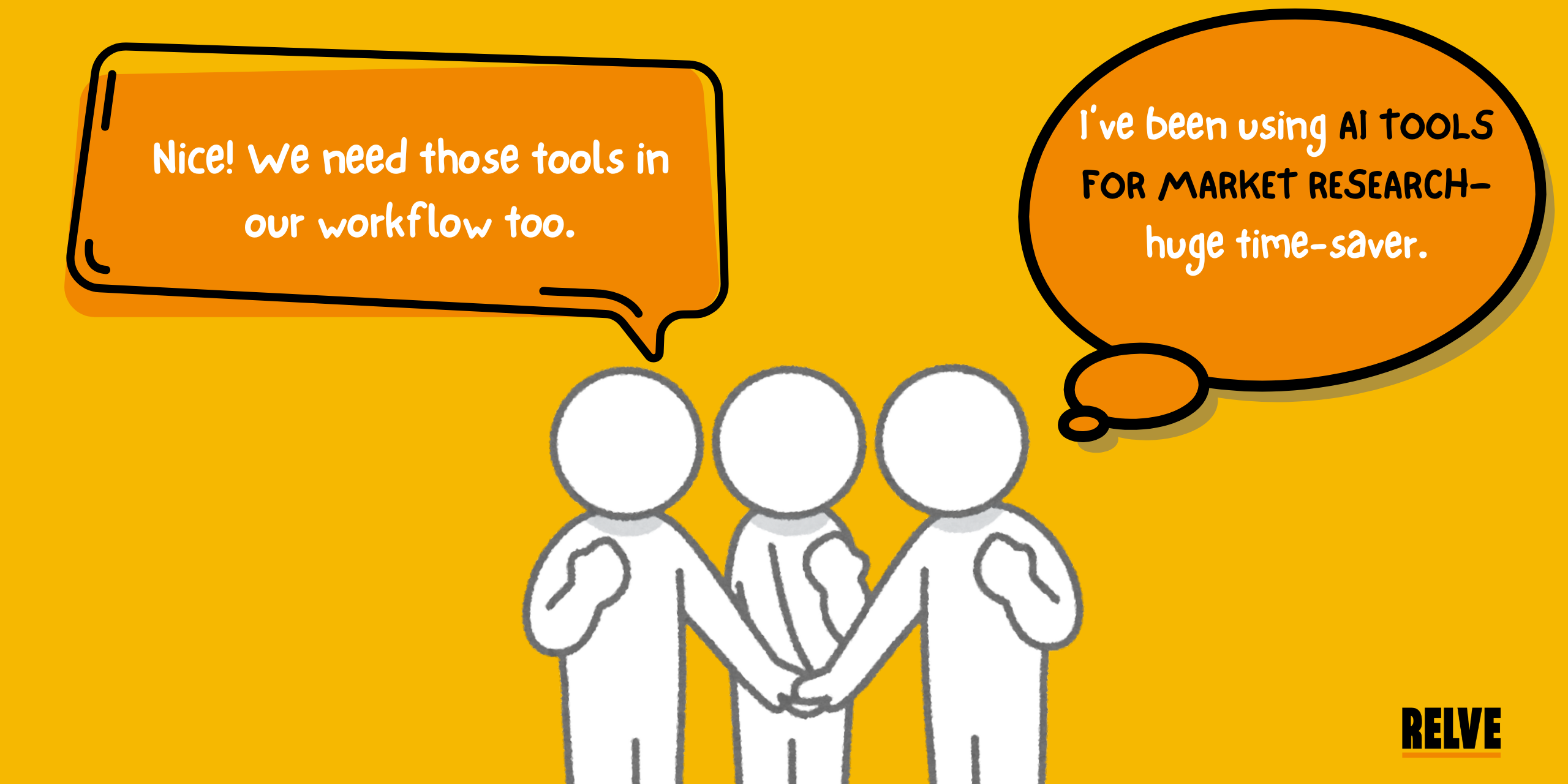Market research is no longer as simple as it used to be. As markets shift rapidly and consumer behaviour evolves overnight, traditional methods, such as surveys, focus groups, and manual analysis, are often expensive, time-consuming, and prone to bias. Enter AI tools for market research, a transformative force that’s making data collection, analysis, and insight generation faster, more innovative, and more accessible.
In fact, 66% of global decision-makers are already using or planning to use AI for market research and customer intelligence. And among those, generative AI platforms like ChatGPT and others are rapidly becoming a favourite for their speed, adaptability, and cost-efficiency.
Since you’re here, we will learn how to use AI tools for market research to uncover rich consumer insights and give your campaign a much-needed boost.
Why Use AI for Market Research?
Traditional market research has long been the foundation for strategic decision-making; however, it also comes with limitations.
Surveys can take weeks to design, distribute, and analyse. Small sample sizes and location-specific biases can limit the effectiveness of focus groups. Secondary research often requires extensive filtering to extract insights relevant to a specific niche.
These processes are not only time-consuming but also resource-intensive, making them less feasible for fast-moving brands and startups.
Marketers today are under pressure to deliver results quickly while staying in tune with shifting consumer behaviors. Waiting three months for a market research report just isn’t viable when consumer sentiment can change in a matter of days.
This is where AI steps in – and changes the game.
How AI Changes the Game for Market Research
AI enables real-time, scalable, and dynamic research. By using AI tools for market research, marketers can instantly generate buyer personas, identify market gaps, and gather demographic insights that would traditionally take weeks to compile. This means faster go-to-market strategies, more accurate targeting, and campaigns rooted in data – not guesswork.
Even better, AI minimizes human bias by processing large datasets objectively. It can surface insights across hundreds of variables, identify trends before they hit mainstream, and help you stay agile in a hypercompetitive market.
In short, using AI for market research allows marketers to:
- Automate repetitive analysis tasks
- Extract consumer insights on demand
- Test ideas quickly before investing heavily
- Stay ahead of competitors through faster, deeper research
By blending creativity with intelligent automation, AI enables marketers to craft more effective messages, identify unmet needs, and position their brand precisely where demand is growing. It’s not just a replacement for traditional research – it’s an upgrade.
How to Use AI for Market Research with Effective Prompts
At the heart of generative AI lies one key element: the prompt. Crafting the right prompts helps you extract actionable insights quickly and efficiently.
We’ll guide you through four powerful prompt examples you can use on LLM platforms.
We will walk you through each step with:
- The whole prompt (and the thinking behind it)
- The output (so that you have an idea of the results)
- The best AI tools for market research (which can serve as powerful alternatives)
1. Gather and Present Publicly Available Data
First things first. As a marketer, you want to know who your ideal customers are in major urban markets.
You do this by understanding demographic trends, such as age groups, income levels, and lifestyle preferences. These data points can help you better shape your product positioning and messaging.
For example, if data shows that Gen Z professionals in New York prefer eco-conscious beverages with customizable Flavors, you can tailor your packaging and marketing accordingly.
Market Research Prompt
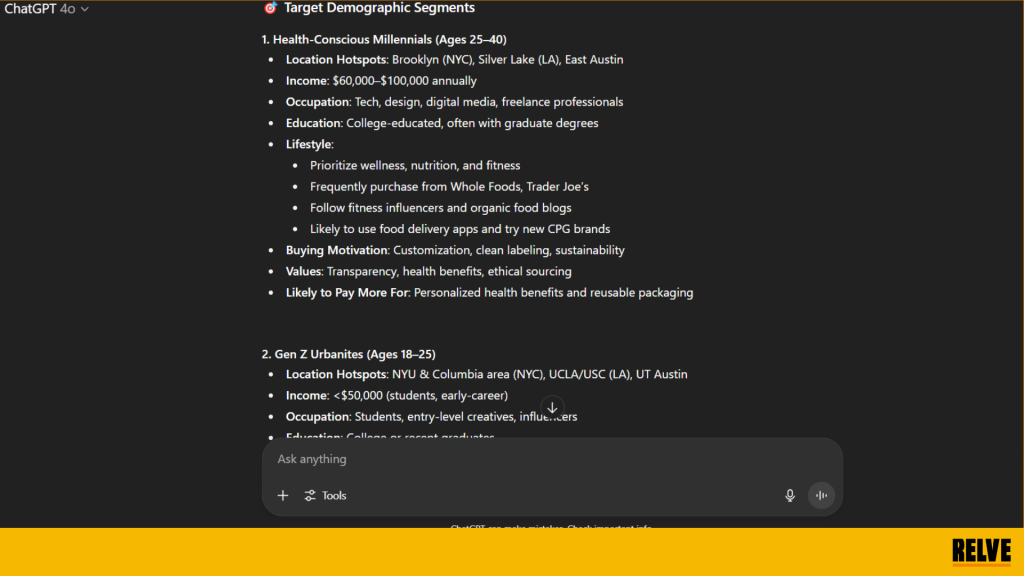
Best AI Tools to do demographic research
- ChatGPT: Ideal for synthesizing demographic insights based on context. It can rapidly summarize and contextualize findings to fit your brand’s goals.
- People Data Labs: Provides access to real-world demographic and employment data. Useful for profiling consumer segments in specific cities.
- Google Dataset Search: Helps you find large-scale public datasets (e.g., census data, purchasing patterns, health trends) relevant to your niche.
2. Develop Buyer Personas
Once you have data, you need to translate it into actionable buyer personas.
These personas allow you to segment your audience and design specific campaigns, features, or offers that resonate with different types of buyers.
For your second step, use a prompt that helps you identify not just “who” your buyers are but also what they care about, what turns them off, and how to speak to them effectively.
Buyer Persona Prompt
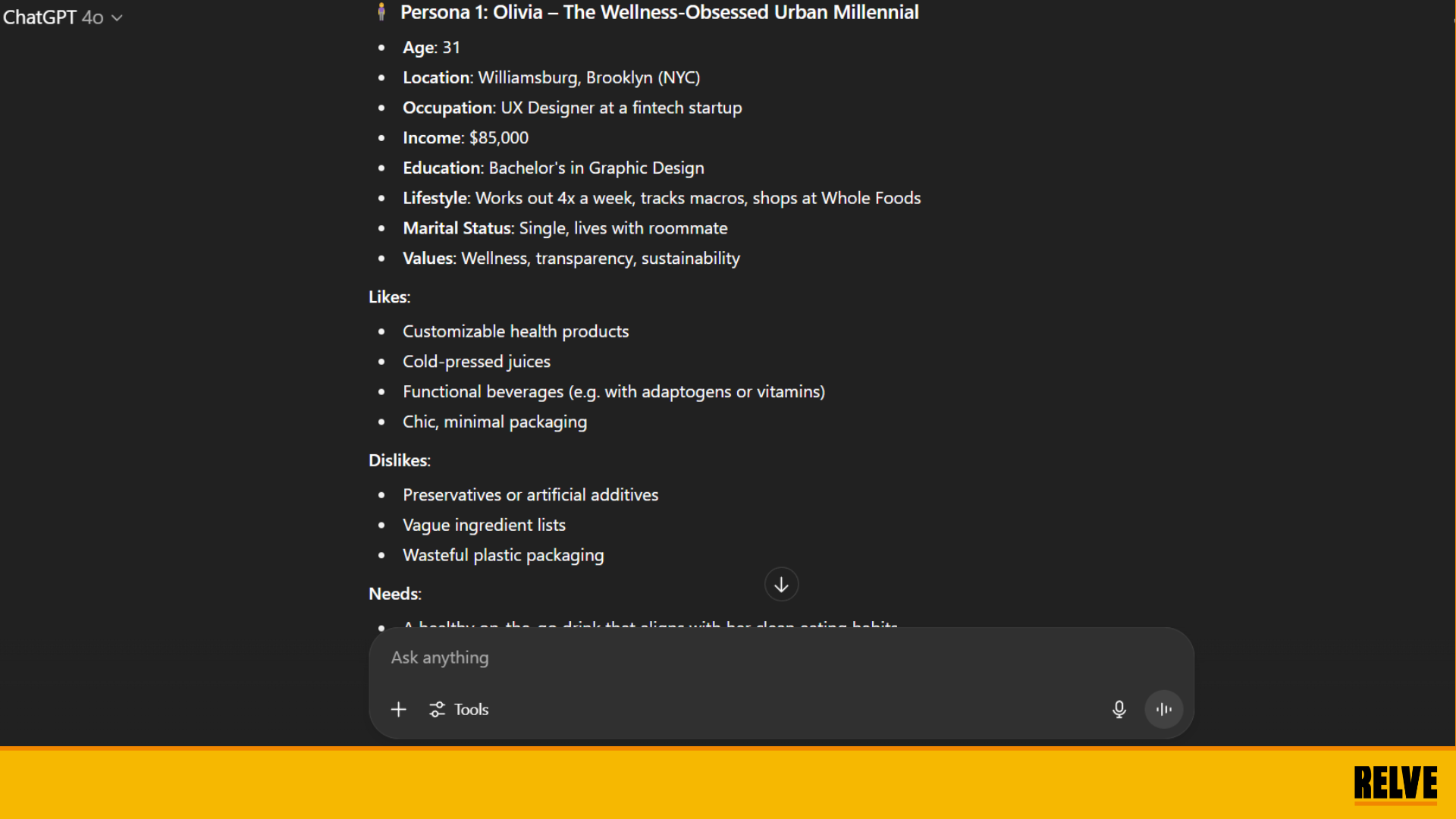
Best AI Tools to discover buyer personas
- HubSpot Persona Generator (AI): Generates visual persona profiles that include goals, pain points, and preferred channels.
- ChatGPT: Allows you to build custom personas based on specific attributes (e.g., eco-conscious millennials, busy parents, fitness enthusiasts).
- Delve AI: Uses live website data and analytics to generate behavioral and psychographic personas automatically.
3. Identify Competitors
You can’t position your product effectively without understanding what others are doing.
We will now use a prompt that helps you map the competitive landscape – who’s selling similar products, how they position themselves, where they operate, and what sets them apart.
To help you out, use this table to identify how your brand can stand out (e.g., price, customization, sustainability) or which areas you need to improve:
Competitive Analysis Prompt
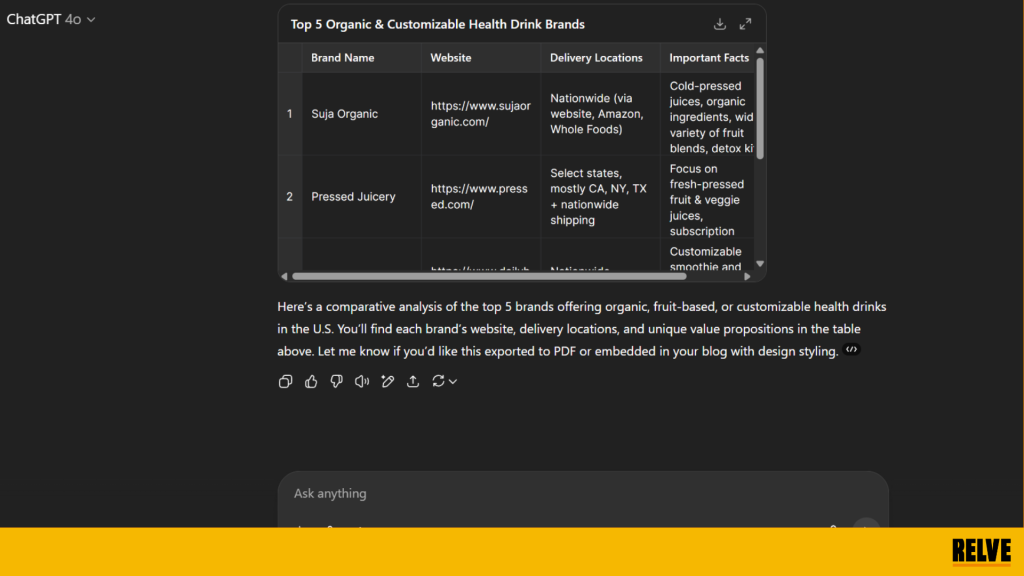
Best AI Tools to identify competitors
- SimilarWeb: Offers analytics on traffic sources, bounce rates, and top-performing content of competitors.
- Crayon: A competitive intelligence platform that tracks your rivals’ digital and offline activities.
- ChatGPT with Web Access Plugin: Great for summarizing company bios, customer reviews, and coverage across the web.
4. Get Suggestions for Filling Market Gaps
Knowing where the market is oversaturated is as important as knowing where it’s underdeveloped. This prompt helps you explore unmet consumer needs, pricing gaps, format innovations (like transparent packaging), or overlooked ingredients.
This type of research is especially useful before pitching investors or launching a new product feature.
Product Strategy Prompt
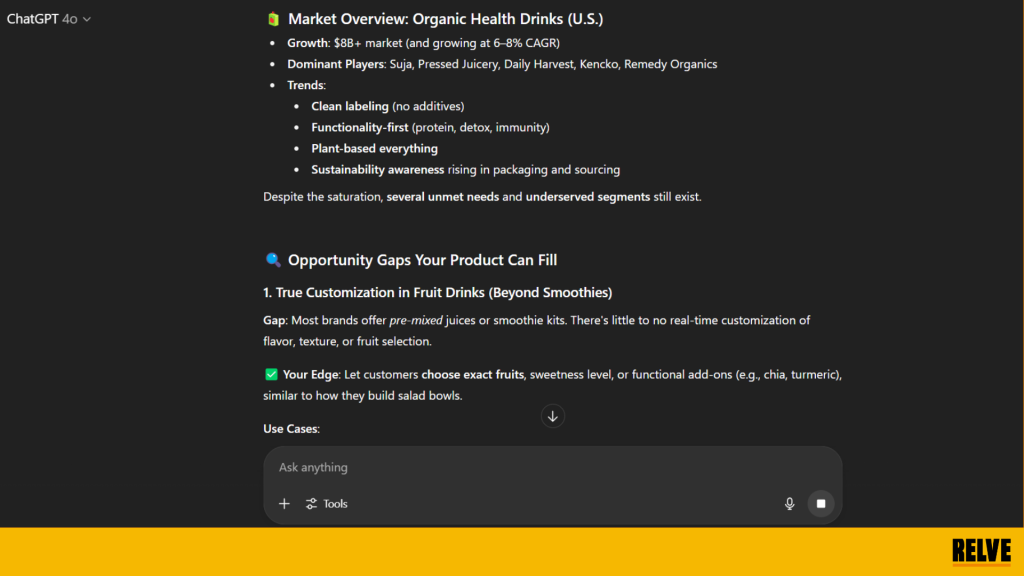
Best AI Tools to identify market gaps
- Neural.love: Generates visual concept maps and trend imagery based on text input, ideal for innovation teams.
- ChatGPT: Can quickly scan through features, benefits, and reviews to highlight missed opportunities.
- Trend Hunter AI: Surfaces emerging patterns in consumer behavior, product formats, and niche trends globally.
Conclusion: The Future of Market Research is AI-Powered
AI is no longer a luxury for Fortune 500 research teams. With tools like ChatGPT and others, anyone – from indie entrepreneurs to full-scale marketing teams – can access AI-powered consumer insights for market research in minutes.
By embedding the right prompts and tools into your workflow, you can:
- Save weeks of manual research
- Uncover data you’d otherwise miss
- Create smarter, faster, leaner strategies
As the technology continues to evolve, the question is no longer whether you should use AI – but how creatively and effectively you can use it.
If you’re serious about finding product-market fit or gaining a competitive edge, then start using AI for market research.
